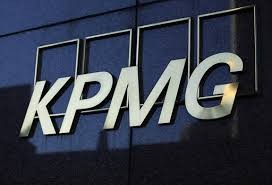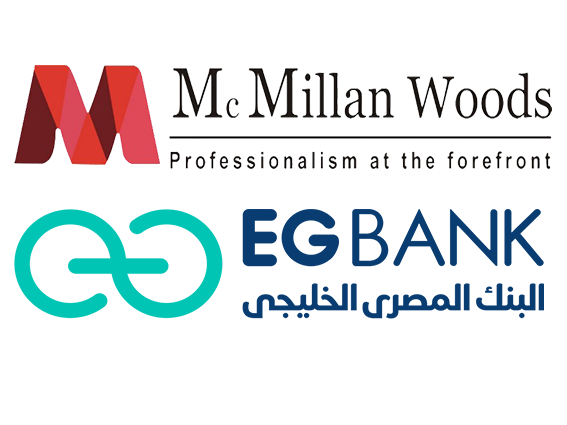Identifying the Role of the Finance Function in Enterprise Performance Management

Introduction from Charles Tilley, Chair, IFAC Professional Accountants in Business (PAIB) Committee
why enterprise performance management is critical to the future of the profession?
As part of the IFAC PAIB Committee’s global dialogue on A Vision for the Finance
Professional and the Finance Function, the need for finance and accounting professionals to
Offer a much higher contribution to their organizations is clear.
A digital enabled finance function is more efficient and therefore an opportunity for
finance teams to become business partners rather than technical support to their
Organization’s challenges.
Driven by changing competitive environments and business models, Enterprise
Performance Management (EPM) is evolving rapidly. The essence of finance business
partnering is to align strategy and priorities to operational execution and resource
Allocation, and to provide actionable insights on performance.
Broad-based information and analysis is needed to manage risk, execute business strategies and deliver operational excellence.
The key question is whether the finance function and its professionals are able to provide what the business needs.
EPM requires an effective contribution beyond reporting on financial performance and financial metrics based on income statement or balance sheet components. The finance function has to enable decisions across the organization, requiring deeper, clearer insight into operations, customers, markets, and the external business environment. To seize the opportunities that EPM and business analytics present requires an operationally grounded and data-driven perspective to decision support.
Our role at the global level is to support professional accountants working in private and public sectors. Consequently, our work to explore how accountants can ensure relevance in this space should help inform professional accountancy organizations on the skills and competencies needed for continued relevance to organizations, capital markets and societies.
A critical first step is for finance leaders to develop a vision and plan to guide the finance function toward long term value creation in a multicapital world.
EPM Involves Driving Actions and Interventions
An effective finance business partner aims to provide actionable insights to management at all levels of the business for better decision-making and value creation over time.
EPM represents a range of activities
and practices that provide the reference
points needed to deliver insights based
on financial and non-financial, internal
and external, and structured and unstructured data and information. EPM is based on an integrated management approach that links strategy to core processes and activities using relevant measures to report, manage performance and improve understanding of value creation.
For finance professionals to be viewed as business partners requires their contribution to effective EPM beyond traditional financial reporting and financial systems.
The demands on EPM are evolving. Organizations want information and insights to help them respond quickly and more confidently to the changing competitive environment and uncertainty, and adapt and execute strategic and operational plans. It is critical that professional accountants in business become effective business partners and value enablers in the EPM space.
Improving their involvement in core EPM activities will also help the finance function develop a clearer mandate and position as a business partner to other organizational functions.
Finance professionals have traditionally been involved in various aspects of EPM, but their relevance as strong business partners increasingly will depend on being effective beyond reporting on financial performance by providing useful, forward looking insights covering operations, customers, markets, and competitors.
The Current Effectiveness of EPM Activities and Involvement of Finance Highlights Need for Improvement.
Planning, Budgeting, and Forecasting
Planning, Budgeting, and Forecasting: An Eye on the Future: Of 900 finance professionals 77% of the respondents thought there should be a partnership between operations and finance, 83% of the work was done by finance and only 10% by operations. Furthermore, 46% of the respondents believed a budget resulted in a politically agreed number not aligned with the real business outlook.
Integrated Performance Analysis – Operational, Cost, and Profitability Performance Reporting: An Eye on the Facts:
Of 1,100 finance professionals, 38% are “providers of basic financial analysis”. 18% believed finance was seen by the rest of the organization as mere “gatekeepers of data”. Only 41% believed finance had achieved any level of “business partnership” in the organization.
Profitability and Cost Analysis: An Eye on Value: Of 1,100 financial professionals, 85% carry out analysis on cost and profitability. However, only 32% said that profitability and cost analysis is available for distribution channels. 46% say profitability and cost analysis is available for customers, and 83% say traditional profit and loss reporting aligned to the organization’s structure is the primary basis for profitability and cost analysis. 66% said apportionment was used as the basis of allocation of shared costs rather than a driver-based approach which would provide a more accurate and informed picture.
A Harvard Business Review (HBR) survey reported that 72% of executives find their
companies’ strategies and operations are susceptible to digital disruption by
competitors in the next three years.
The average company lifespan of an S&P500 company is now under twenty years (Technology killing off corporate America). In response, organizations need to understand their changing environment, challenge their business model and operational assumptions,
and continuously evaluate performance and plans.
The finance function should play a major role in meeting this challenge.
Four significant changes shape how business operate and therefore the expectations on EPM.
• Transformed channels to market
• Erosion of traditional customer bases, and new ones emerging
• Dramatically shifting product and service line profitability
• Falling barriers to entry
Information and insights need to be provided in the context of a business and operational environment that is continually changing. For example, the fundamental changes to the retail sector with the rise of online channels require business partners to provide insights on changing industry dynamics and customer expectation and demand, impact on revenues, costs and profitability, changes to marketing investments, and supply chains to support new channels. Digital or smart manufacturing provides data and information throughout the product life cycle which in turn transforms sales, marketing, services and the nature of the relationship with customers.
Organizations with superior EPM are more likely to be agile and adaptable, make better decisions more quickly,
and focus their time and resources on processes and activities that create value.
The opportunity for professional accountants working in business is immense, but it is an opportunity that must be proactively taken by developing the key enablers of effective EPM explored in this briefing.
The Finance Role as a Business Partner
Two distinct aspects to the business partner role are relevant to EPM. The first is looking ”up and out”; up to the CEO, the board of directors; and out to investors and external stakeholders.
Professional accountants are traditionally focused on this aspect. The second is looking “around and down” the organization at the finance function’s peers and customers/internal stakeholders from the shop floor to functional and business unit managers.
Traditional financial statements, designed primarily for facilitating transparency and confidence among investors and creditors, are less relevant for internal decision-making among managers because they do not reveal enough information and insight about the underlying business.
All levels of an organization need information to support value creating decisions, from daily issues on operational efficiency and customer service to major strategic shifts of direction. Effective EPM requires moving beyond the processes supporting external financial reporting.
EPM requires a deep understanding of both the external environment and the organization’s resources and underlying processes to deliver timely, action oriented, and decision relevant insights on economic realities and value drivers. This requires an operationally grounded perspective and causal approach to creating information to support decisions across the organization.
Integrated Thinking and Reporting
Additionally, integrated thinking and reporting are creating a demand for a broader and increasingly non-monetary perspective of enterprise performance through a “capitals” or “resources” perspective.
For many companies, non-financial or intangible assets explain the bulk of how value is created in an organization.
This includes customer relationships, employees and innovation, operations performance (including environmental aspects such as emissions, quality of business processes, cycle-time, intellectual property, brand reputation,
and the organization’s supply chain and pipeline).
Information on such areas is not captured in accounting-based reporting but needs to be captured in EPM if value creation is going to be effectively tracked across all the capitals and resources that organizations depend upon.
A Framework for Understanding EPM
The core EPM activities and enablers to support
decisions at all levels of the organization are highlighted in the infographic. The effectiveness of these activities requires understanding and communicating the key financial and non-financial value drivers and the connectivity between them.
The two core EPM activities that will be familiar to accountants in business and finance functions are:
Dynamic Planning and Forecasting – Key finance function activities focused on the future, that involve predictive or prescriptive analytics to identify opportunities and risks, establish goals and targets, control and adjust performance, and provide substantive input on strategies and progress against goals and targets.
The uncertainty and speed of change in the business environment requires more and better information, a clear focus on reality, and a highly efficient and real time cycle of planning/evaluation, budgeting, and forecasting. Plans and rolling forecasts provide an important link between performance in the present and future aspirations.
Integrated Performance Analysis and Insights – Providing insights on cost, profitability, productivity, and operational performance to understand and respond proactively to current performance. Integrated Performance Analysis requires operational performance be clearly connected to financial results, recognizing that cost and profitability are ultimately the results of decisions about resources and processes. Second, an emphasis on “analysis” rather than “reporting” implies a more open, continuous, participative, and responsive process based on providing timely insights and analysis on economic reality and value drivers.
The ability to carry out these activities
effectively and efficiently depends on four
key enablers of effective business
partnership highlighted below:
Planning, forecasting and understanding the contribution of different activities to performance requires relevant, causal data and analysis on value creation processes and resources in relation to goals and targets
To be effective business partners, finance functions should be seeking to provide actionable information on products, customers, and channels in the context of changes in the business environment.
This requires greater connectivity and collaboration between the finance function and other areas such as strategy, sales and marketing, procurement, and operations, as well as greater integration of operational value streams and core business processes such as procure-to pay, customer to cash, and account to report.
In terms of decision support, a key challenge for many finance functions is that internal reporting around profit and loss areas is not meeting business needs. Planning and forecasting can be too finance centric. Finance functions often provide a rudimentary level of cost and revenue information that describes financial performance (and the accuracy of output, product, and service-line costs might be limited where indirect expenses do not relate to outputs i.e., there is no or limited causality). This means fewer insights relating to customers, such as customer profitability or operations, and the business environment.
• A more analytical and predictive approach to planning and decision support focuses on projections requiring more advanced approaches to data and models.
To be actionable, data needs to be of adequate quality and reliability, timely, reflect causal relationships, and link clearly to resources, customers, and strategic goals.
• Decision support models help transform data into information that drives actions and outcomes. A modeling approach helps to accurately represent economic reality by reflecting the causal relationships among resources, processes, products, services, customers, channels, markets, and investments that create value now and will continue to create value in the future (see IFAC’s International Good Practice Guide, Evaluating and Improving Costing in Organizations and IMA’s Conceptual Framework of Managerial Costing).
Information and insights need to be provided in the context of a business and operational environment that is continually changing. For example, the fundamental changes to the retail sector with the rise of online channels require business partners to provide insights on changing industry dynamics and customer expectation and demand, impact on revenues, costs, and profitability, changes to marketing investments, and supply chains to support new channels. Digital or smart manufacturing provides data and information throughout the product lifecycle which in turn transforms sales, marketing, services and the nature of the relationship with customers.
Organizations with superior EPM are more likely to be agile and adaptable, make better decisions more quickly,
and focus their time and resources on processes and activities that create value.
The opportunity for professional accountants working in business is immense, but it is an opportunity that must be proactively taken by developing the key enablers of effective EPM explored in this briefing.
The Finance Role as a Business Partner
Two distinct aspects of the business partner role are relevant to EPM. The first is looking ”up and out”; up to the CEO, the board of directors; and out to investors and external stakeholders.
Professional accountants are traditionally focused on this aspect. The second is looking “around and down” the organization at the finance function’s peers and customers/internal stakeholders from the shop floor to functional and business unit managers.
Traditional financial statements, designed primarily for facilitating transparency and confidence among investors and creditors, are less relevant for internal decision-making among managers because they do not reveal enough information and insight about the underlying business.
All levels of an organization need information to support value-creating decisions, from daily issues on operational efficiency and customer service to major strategic shifts of direction. Effective EPM requires moving beyond the processes supporting external financial reporting.
EPM requires a deep understanding of both the external environment and the organization’s resources and underlying processes to deliver timely, action oriented, and decision-relevant insights on economic realities and value drivers. This requires an operationally grounded perspective and causal approach to creating information to support decisions across the organization.
Integrated Thinking and Reporting
Additionally, integrated thinking and reporting are creating a demand for a broader and increasingly non-monetary perspective of enterprise performance through a “capitals” or “resources” perspective.
For many companies, non-financial or intangible assets explain the bulk of how value is created in an organization.
This includes customer relationships, employees, and innovation, operations performance (including environmental aspects such as emissions, quality of business processes, cycle-time, intellectual property, brand reputation,
and the organization’s supply chain and pipeline).
Information on such areas is not captured in accounting-based reporting but needs to be captured in EPM if value creation is going to be effectively tracked across all the capitals and resources that organizations depend upon.
A Framework for Understanding EPM
The core EPM activities and enablers to support
decisions at all levels of the organization are highlighted in the infographic. The effectiveness of these activities requires understanding and communicating the key financial and non-financial value drivers and the connectivity between them.
The two core EPM activities that will be familiar to accountants in business and finance functions are:
Dynamic Planning and Forecasting – Key finance function activities focused on the future, that involve predictive or prescriptive analytics to identify opportunities and risks, establish goals and targets, control and adjust performance, and provide substantive input on strategies and progress against goals and targets.
The uncertainty and speed of change in the business environment require more and better information, a clear focus on reality, and a highly efficient and real-time cycle of planning/evaluation, budgeting, and forecasting. Plans and rolling forecasts provide an important link between performance in the present and future aspirations.
Integrated Performance Analysis and Insights – Providing insights on cost, profitability, productivity, and operational performance to understand and respond proactively to current performance. Integrated Performance Analysis requires operational performance be clearly connected to financial results, recognizing that cost and profitability are ultimately the results of decisions about resources and processes. Second, an emphasis on “analysis” rather than “reporting” implies a more open, continuous, participative, and responsive process based on providing timely insights and analysis on economic reality and value drivers.
The ability to carry out these activities
effectively and efficiently depends on four
key enablers of effective business
partnership highlighted below:
Planning, forecasting and understanding the contribution of different activities to performance requires relevant, causal data and analysis on value creation processes and resources in relation to goals and targets
To be effective business partners, finance functions should be seeking to provide actionable information on products, customers, and channels in the context of changes in the business environment.
This requires greater connectivity and collaboration between the finance function and other areas such as strategy, sales and marketing, procurement, and operations, as well as greater integration of operational value streams and core business processes such as procure-to-pay, customer to cash, and account to report.
In terms of decision support, a key challenge for many finance functions is that internal reporting around profit and loss areas is not meeting business needs. Planning and forecasting can be too finance-centric. Finance functions often provide a rudimentary level of cost and revenue information that describes financial performance (and the accuracy of the output, product, and service-line costs might be limited where indirect expenses do not relate to outputs i.e., there is no or limited causality). This means fewer insights relating to customers, such as customer profitability or operations, and the business environment.
• A more analytical and predictive approach to planning and decision support focuses on projections requiring more advanced approaches to data and models.
To be actionable, data needs to be of adequate quality and reliability, timely, reflect causal relationships, and link clearly to resources, customers, and strategic goals.
• Decision support models help transform data into information that drives actions and outcomes. A modeling approach helps to accurately represent economic reality by reflecting the causal relationships among resources, processes, products, services, customers, channels, markets, and investments that create value now and will continue to create value in the future (see IFAC’s International Good Practice Guide, Evaluating and Improving Costing in Organizations and IMA’s Conceptual Framework of Managerial Costing).










